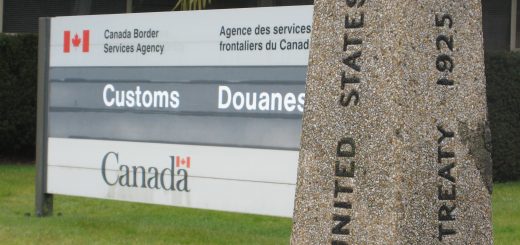Prosecuting Crime at Home Secures Respect for Human Rights
The Government of Canada is acutely aware of the cost of litigation. Those costs, along with the policy and legal implications of litigation, are now the subject matter of a new Cabinet Committee on Litigation Management, chaired by Minister Dominic LeBlanc. This committee will advise federal Justice Minister Jody Wilson-Raybould, who recently suggested in a speech to the Canadian Bar Association that the Government of Canada would be reconsidering its “litigation position” in several cases so as to ensure that its overall legal strategy comports with Canada’s Charter of Rights and Freedoms. We support this goal, with the Government’s predecessor having advanced legal arguments—and enacted laws—that were both costly and not clearly Charter compliant.
One case we think should be considered is India v Badesha, 2016 BCCA 88 [Badesha], now pending before the Supreme Court of Canada. This case concerns the desired trial in India on charges of conspiracy of two Canadian citizens, Badesha and Sidhu, alleged to have orchestrated from Canada the so-called “honour killing” of their daughter (and niece) and the attempted murder of her husband in India in 2000. The Republic of India has requested their extradition, but why not pursue a trial in Canada? The planning of the crime in Canada provides the “real and substantial link” between Canada and the offence, as required since Libman v The Queen, [1985] 2 SCR 178, and the Canadian citizenship of the mother, uncle, and daughter is a factor to be weighed, following United States of America v Cotroni, [1989] 1 SCR 1469. Significantly, it has also been credibly reported that detainees in Indian prisons face torture, rape, and abuse by prison authorities, and both accused are elderly with medical problems.
Canada and India have been extradition partners for some time, concluding an extradition treaty in 1987—although Canada had allowed an extradition to India without treaty in 1985 (SI/85-190, Canada Gazette, Part II, v 119:23). It was once assumed that: “We sign treaties only with states which can assure us that their systems of criminal justice are fair and offer sufficient procedural protections to accused persons” (Kindler v Canada (Minister of Justice), [1991] 2 SCR 779 at 845). But foreign governments, and foreign conditions, can and do change over time, as made evident through human rights monitoring. Indeed, it was India’s current human rights record, not its record from the 1980s, which led then-Justice Minister Peter MacKay to request and receive “diplomatic assurances” from India that it would not mistreat the two Canadians. Not every extradition is accompanied by a formal promise not to mistreat, and the fact that Canada had to ask for such a promise should raise alarm.
India’s “appalling human rights record” (to use Justice Donald’s description) was also of concern to the British Columbia Court of Appeal, which by a two-to-one majority found the Minister’s decision to extradite in these circumstances to be unreasonable and in breach of the Charter. The court’s reasons refer to compelling evidence suggesting that India cannot control its prison authorities sufficiently to ensure the safety of the two accused. In terms of next steps, the majority explained that there were two options. The court suggested that the Minister could either negotiate better, and more robust, assurances that included further conditions upon which Canada could rely, or else prosecute the two in Canada. Rather than accept this ruling, the Government of Canada is pursuing an expensive and time-consuming appeal to the Supreme Court of Canada.
Extradition, by definition, is a process for securing cross-border cooperation to secure the prosecution of serious criminality. It has a law enforcement purpose, which we support. But as the Supreme Court recently confirmed, extradition, as a legal process based on both statute and treaty law, also serves a second purpose: to protect the basic human rights of persons sought. If we take that second purpose as seriously as the first, and wish to give our Charter its full effect, we must consider the human rights record of the country seeking extradition and appraise the risk of harm. To do otherwise is to pretend that our law has taken a step back to the days of “non-inquiry” when what happened in a foreign land at the hands of a foreign State was seen as none of our business. Thankfully, those attitudes changed many years ago in both law and practice for most Western states (the exception being the United States, where the rule of non-inquiry retains support).
Serious criminality deserves prosecution and punishment. But Canada’s policy on diplomatic assurances also needs work, since the Charter is clearly applicable to a federal Minister making a decision in Canada to take action that uses the coercive force of the Canadian state with serious consequences for two Canadian citizens. It is also true that one cannot do indirectly what one is prohibited from doing directly, and Canada has its own obligations to avoid placing individuals in situations of foreseeable risk of torture and other forms of serious ill treatment. As for promises made not to torture or mistreat, both the Charter and Canada’s own international human rights treaty obligations impose a requirement on Canada to appraise the reliability of these promises, to gauge their robustness, and to weigh these promises against the foreseeability of the risk of harm. After all, when a person is surrendered “on assurances” beyond Canada’s jurisdiction, there is little recourse if those assurances are later breached.
Many Canadians have ties to India, and India has become one of the fastest-growing major economies. But India is also one of the few countries in the world that is not a party to the 1984 Convention Against Torture and Other Forms of Cruel, Inhuman and Degrading Treatment or Punishment (“Torture Convention”). India signed this leading treaty back in 1997, with basic treaty law indicating that signature to a multilateral treaty suggests an intention to become a party. But the world’s most populous democracy never followed through with the required steps for ratification, and as a mere signatory, India is not bound by the convention’s obligations. As for promises, India has been making promises to become a party for almost 20 years, but what is the obstacle within India that cannot be overcome? And what do these promises to ratify say about India’s commitment to changing its own internal practices so as to be in a position to support the efforts of the international community to eradicate ill treatment? If we as a country place a high value on the global prohibition of torture, cruelty, and abuse at the hands of the state, ratification of the Torture Convention should be a basic condition precedent for Canada-India extradition relations.
As for publicly available appraisals of India’s human rights record, one need look no further than the annual human rights reports by the U.S. State Department. Its 2015 report on India states clearly that “[t]he most significant human rights problems involved police and security force abuses, including extrajudicial killings, torture, and rape.” The report goes on to state: “Other human rights problems included disappearances, hazardous prison conditions, arbitrary arrest and detention, and lengthy pretrial detention. Court backlogs delayed or denied justice, including through lengthy pretrial detention and denial of due process.”
Each of us has long argued for a more robust role for human rights considerations in matters of extradition, no matter who the extradition partner. See e.g., Joanna Harrington, “The Role for Human Rights Obligations in Canadian Extradition Law” [2005] 43 Can YB Int’l L; Robert J Currie, “Charter Without Borders? The Supreme Court of Canada, Transnational Crime and Constitutional Rights and Freedoms” (2004) 27 Dal LJ 235. See also our contributions in the Routledge Handbook of Transnational Criminal Law (2015). Both of us have raised concerns about Canadian extradition actions that result in individuals facing a variety of serious human rights concerns, whether capital punishment in the Caribbean or life imprisonment without parole in the United States.
One argument sometimes heard in rebuttal is that a refusal to extradite gives criminals a safe haven in Canada. However, in Badesha Justice Donald of the B.C. Court of Appeal had the answer. Prosecute in Canada—a possibility the B.C. Prosecution Service considered and, thus far, has rejected. Legally, there is no bar to a Canadian prosecution, and the costs for securing witnesses from abroad can be weighed against the dent in the public purse from pursuing appeals to the highest court. We also have the arrangements in place for Canada to facilitate these kinds of transnational cases.
Another occasional counter-argument is that refusal to extradite on human rights grounds could put Canada in breach of the relevant extradition treaty, or at least impair extradition relations between Canada and the requesting state. This is, in fact, part of the underpinning of the “non-inquiry” approach. The interaction between a state’s international human rights obligations and extradition treaties is complex from a methodological point of view, and has been much discussed in the literature. However, states are simply not in the habit of protesting or bringing claims regarding this kind of refusal; these situations tend to quietly disappear and/or be settled by diplomatic negotiations that satisfy the human rights requirements of the requested state. Indeed, Canada has negotiated assurances on more than one occasion (see e.g., Thailand v Saxena, 2006 BCCA 98).
No rational person would deny the need for justice for those that commit serious crimes, and based on the record as it stands, we think Badesha and Sidhu should stand trial. But Minister MacKay’s decision to extradite placed Canada out of step with international trends and its own obligations under international human rights law. As recognized long ago by the European Court of Human Rights in the leading case of Soering v United Kingdom, (1989) 11 EHRR 439, the prohibition on serious mistreatment entails an obligation not to extradite an individual to a country where there are substantial grounds for believing that he or she faces a real risk of serious harm. We therefore ask: why not accept the message provided by the B.C. Court of Appeal and put taxpayer resources into either negotiating robust assurances, or prosecuting the two in British Columbia?
Robert J. Currie is a Professor of Law at the Schulich School of Law at Dalhousie University; Joanna Harrington is a Professor of Law with the Faculty of Law at the University of Alberta.








Join the conversation